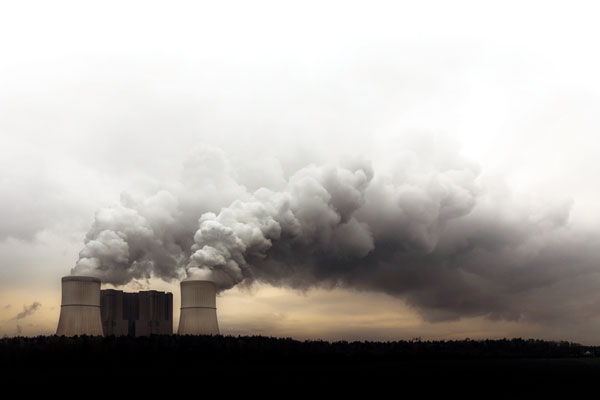TThe time was around 3 am on January 17 last year when the residents of Akbarabad area in Faisalabad woke up to the deafening noise of a blast. Many of them rushed out of their houses to find out what had actually happened while others started to recite the holy verses they knew by heart. There was fear in the air and apprehensions among the locals about some terrorist group attacking the area.

TThe time was around 3 am on January 17 last year when the residents of Akbarabad area in Faisalabad woke up to the deafening noise of a blast. Many of them rushed out of their houses to find out what had actually happened while others started to recite the holy verses they knew by heart. There was fear in the air and apprehensions among the locals about some terrorist group attacking the area.
It did not take them much time to discover that a huge boiler set up inside a house, right in the middle of a congested residential area had burst due to excessive heating and pressure and left four men dead and several injured. The owner of the house had installed this boiler secretly in contravention of the industrial safety laws and not shared this information with the locals.
The workers he had employed would enter from the backdoor and spend long hours here dying yarn cones in a highly unsafe work environment. Later on, investigations into the incident revealed that the boiler had been manufactured locally and did not meet the prescribed standards. There was no meter to automatically gauge the pressure which would build up and it was on the discretion of workers when to shut it down.
This one incident shows how the people of the industrial city of Faisalabad are exposed to risks like deaths and injuries in industrial accidents, mainly due to flaws in urban planning and non-implementation of land use laws in the past. Though, fortunately, the fatal accidents do not take place in quick succession, it does not mean the residents of these areas remain safe from harms to their health and life during the time in between such tragedies.
In fact, it has been learnt, that they become victims of lethal diseases due to exposure to environmental pollutants, especially the toxic air they breathe, and die a slow death. The environmentally unfriendly industrial units in residential areas cause the major harm but hardly any action is taken by the responsible government functionaries. Occupational asthma, silicosis and asbestosis are some of the common diseases that are found in industrial workers in textile, battery manufacturing, cement production, and mineral processing units.
Against this backdrop, there are calls about ridding the city of pollutants, making it an environment-friendly city with ample green areas, enforcing zoning rules and moving harmful industrial areas out of the residential areas. The good thing is that some initiatives have been launched and more are in the offing to tackle these challenges. Further delay in formulating and implementing healthy development plans cannot be afforded, as the city, its population, and industry are bound to grow exponentially in times to follow. If uncontrolled, this growth can turn the city into an urban hell.
The alarming thing at the moment is that several studies, surveys and inspections have revealed that the overall environment and especially the air quality of Faisalabad are extremely poor. As one study puts it: “Air pollutants such as oxides of nitrogen, carbon monoxide, ozone, hydrocarbons and particulate matters, (both Total Suspended Particulate (TSP) and respirable particulate (PM10) and sulphur dioxide are at very high levels. These levels are in general, many times higher than WHO and international standards indicating serious issue of air pollution.”
According to Punjab government’s portal, roughly, there are 512 large industrial units, out of which 328 are textile units, 92 engineering units, and 92 are chemicals and food processing units in Faisalabad, known as the Manchester of Pakistan. Other industries include hosiery, carpet and rugs, nawar and lace, printing and publishing, and pharmaceutical products. There are also some 12,000 household industries, which include some 60,000 power loom factories.
A PricewaterhouseCoopers study published in 2009, surveying the 2008 Gross Domestic Product (GDP) of the top cities in the world, calculated Faisalabad's GDP at $35 billion at that time. The city was third in Pakistan behind Karachi ($78 billion) and Lahore ($40 billion). Faisalabad’s GDP is projected to grow at the rate of 5.7 per cent, higher than the growth rates of 5.5 per cent and 5.6 per cent predicted for Karachi and Lahore.
Tariq Awan, coordinator, Pakistan Institute for Labour Education and Research (PILER), elaborates the environmental challenges faced by the city. He cites cases of many labourers who are suffering from severe respiratory diseases due to inhalation of toxic air, both in industrial and residential areas. He says there is hardly any check on use of harmful and substandard fuels such as waste tyres, poultry waste (chicken droppings), rubber, wood and abandoned coarse cloth by the sizing industry, which is mostly concentrated in industrial area.
Sizing, he says, is about providing protective cover/coating to thread etc and the processes need heating to a certain level. He recalls most of the unit owners opted for these fuels when there was an acute electricity and gas crisis a couple of years ago, but now when the situation is better they are still sticking to these mainly due to the cost factor.
Tariq laments there are hundreds of sizing units established in areas such as Ghulam Muhammad Abad, Faizabad, Jhang Road, and Sargodha Road that are constantly polluting the air and adding to the pollution spread by hundreds of coal-fired brick kilns in and around the city.
Similarly, Syeda Ghulam Fatima, secretary general, Bonded Labour Liberation Front (BLLF) Pakistan identifies use of low quality coal and poultry waste as major reasons for atmospheric pollution and the resulting diseases among workers and the residents of the localities in close vicinity. She says this issue has assumed alarming proportions, as the city remained engulfed in thick smog for many days in November, crippling normal routine life.
Fatima suggests shifting to mechanised brick kilns to save brick-kiln workers from serious respiratory diseases and the city from environmental pollution caused by burning of coal. Though it appears to be an ambitious plan, she says, in the long run the dividends will be high.
Yawar Hussain, director general, Faisalabad Development Authority (FDA), agrees there are challenges and narrates the government plans to tackle these. He says that under the Punjab Private Housing Schemes and Land Sub-division Rules 2010, all the private housing schemes have to allocate at least seven per cent of their land for plantation. This land shall be used to develop parks or green belts, he adds. He shares that FDA is ensuring that these rules are strictly followed and there is no violation in the city.
Yawar agrees many residential areas in the city have industrial units amid them and that house residents are exposed to harmful pollutants present in the surrounding air, but he makes it clear that this will not be allowed anymore. He informed Money Matters that in the past, either such units were set up in residential areas or people started to dwell around industrial units as they hoped to find jobs there. In those times, he says, zoning rules were not so elaborate and neither were they enforced strictly but today it is the priority of the government to clearly define land use rules and separately earmark areas for housing, industry, and agriculture.
On the environmental threats faced by residents, he says the Peri-Urban Structure Plan approved for Faisalabad in 2015 tries to balance the housing, social and business needs of residents and focuses on protecting land meant for agriculture. It aims at providing breathing space to the residents of different areas and help the city grow in a structural manner during the next 20 years. In addition to this, he points out, the Parks and Horticulture Authority (PHA), has launched a move against pollution on a war footing and gone for linear plantation in the city. It is estimated that around 50,000 plants have been planted recently that will ultimately grow into full-fledged trees and help reduce pollution, he shares.
When asked about the redressal of complaints by citizens against their exposure to toxic industrial emissions in their localities, he says the government has established industrial estates in the outskirts of Faisalabad where it intends to relocate the small-sized and cottage industries. “Though it is not easy to uproot these businesses from there, the efforts are underway,” he concludes.
Environmental lawyer Sardar Asif Ali Sial has served as national consultant, Pakistan Environmental Protection Agency (PAK EPA), Ministry of Climate Change, Government of Pakistan and reviewed Pakistan Environmental Protection Act, 1997 as consultant. He has also conducted more than 100 Environmental Impact Assessments (EIAs) including several in Faisalabad.
He laments the fact that the industry does not take compliance with environmental laws seriously and ignores the fact that under the terms of GSP Plus status they have to follow the conditions of nine UN conventions/protocols on environmental compliance. He says EU inspectors are monitoring the situation and it is likely that shipments from Pakistan can be rejected if environmental concerns are not taken care of. “We must devise proper strategies to fulfil these conditions if we do not want to lose this status,” he stresses.
The industry sources claim they are following environmental laws, especially the medium and large scale ones. Faisalabad Chamber of Commerce and Industry (FCCI) members claimed that 90 percent industrial units which are their members have installed wet scrubbers and hence the smoke emitted from these factories is clean as compared to the smokes of other cities. The non-members and the undocumented units are the ones causing the damage, they point out.
Nasim ur Rehman, director, Environment Protection Department (EPD), explains there are nine clusters in Faisalabad where industries and housing units coexist and are hubs of environmental issues. This problem is perennial and efforts are underway since 1997 to make the environment clean, he adds.
He says that after efforts spread over years, a 4,500-acre industrial estate has been established outside the city. There was a plan to shift all industries to this place but this couldn't happen due to various reasons. Therefore, he says, “Our focus is on making these environment-friendly and work till the time they phase out.” But no new industrial unit will be allowed to be set up in residential areas, he clarifies.
Nasim claims atmospheric pollution has been controlled to an extent because the district government is very strict with those units consuming hazardous fuels and releasing untreated emissions in the air. The provincial government has announced a zero tolerance policy against polluters who have contributed a lot to the creation of smog this year, he shares.
The writer is a staff member
Tariq Awan

PILER coordinator
“There is hardly any check on use of harmful and substandard fuels such as waste tyres, poultry waste (chicken droppings), rubber, wood and abandoned coarse cloth by the sizing industry. Most of the unit owners opted for these fuels when there was an acute electricity and gas crisis a couple of years ago, but now when the situation is better they are still sticking to these mainly due to the cost factor.”
Syeda Ghulam Fatima

BLLF secretary general
“Low quality coal and poultry waste are major reasons for atmospheric pollution and the resulting diseases among workers and the residents of the localities in close vicinity. This issue has assumed alarming proportions, as the city was engulfed in thick smog for many days in November, crippling normal routine life.”
